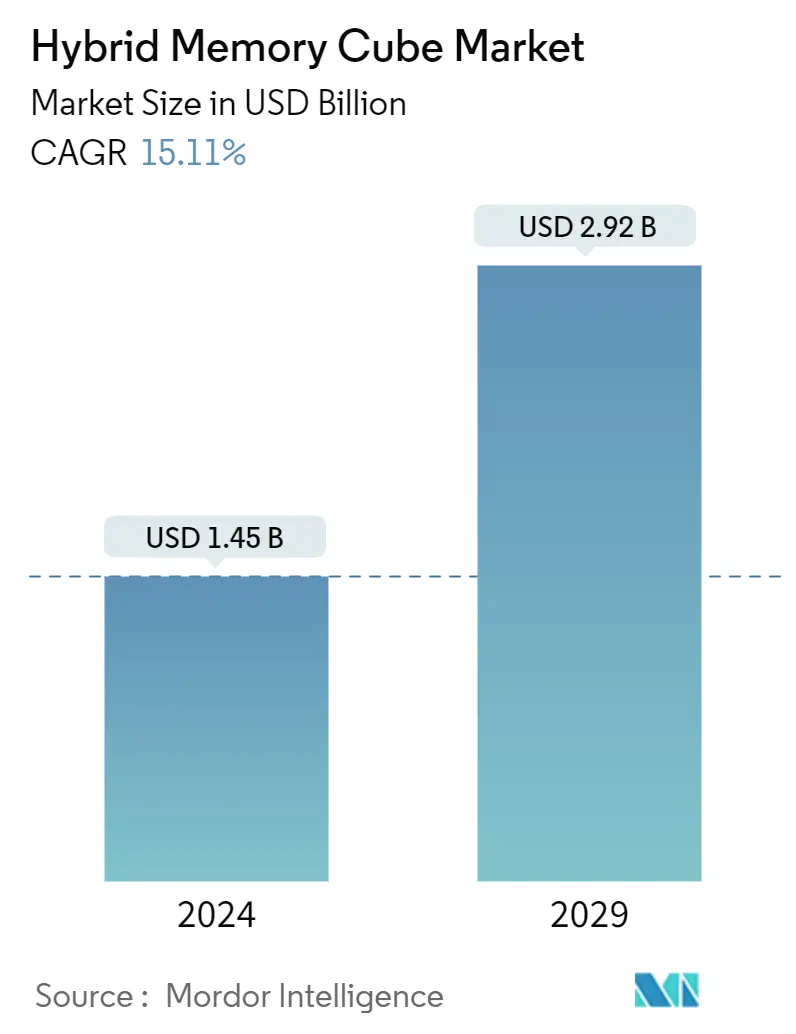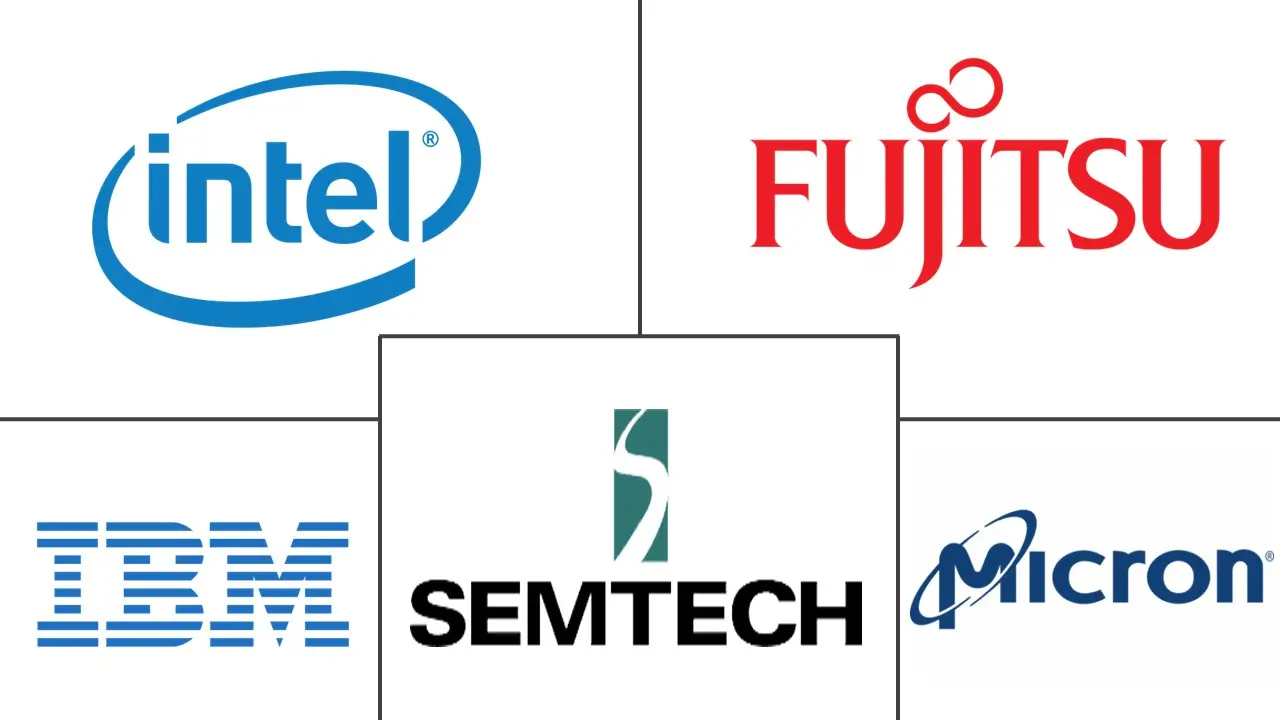Market Size of Hybrid Memory Cube Industry

| Study Period | 2019 - 2029 |
| Market Size (2024) | USD 1.45 Billion |
| Market Size (2029) | USD 2.92 Billion |
| CAGR (2024 - 2029) | 15.11 % |
| Fastest Growing Market | Asia Pacific |
| Largest Market | North America |
Major Players
*Disclaimer: Major Players sorted in no particular order |
Need a report that reflects how COVID-19 has impacted this market and its growth?
Hybrid Memory Cube Market Analysis
The Hybrid Memory Cube Market size is estimated at USD 1.45 billion in 2024, and is expected to reach USD 2.92 billion by 2029, growing at a CAGR of 15.11% during the forecast period (2024-2029).
A hybrid memory cube (henceforth called HMC) is a revolutionary technology that signifies a paradigm shift from current memory architectures.
- The significant factors driving the Hybrid Memory Cube (HMC) market expansion are the rising number of server farms and employees, the increasing shipments of business equipment, and the rising number of assembling activities in the venture stockpiling and consumer hardware sectors. In May 2023, orders for business equipment from United States factories increased for a second consecutive month, suggesting that companies persist in making substantial investments despite elevated borrowing costs and economic uncertainties. The market for Hybrid Memory Cube (HMC) and High-bandwidth memory (HBM) is expanding due to factors like the increasing need for high bandwidth, rising artificial intelligence (AI) use, and developing trends in electronic device downsizing.
- HMC is redefining memory by enabling advancements that can replace conventional DRAM-based systems. It is setting a new standard in the memory market that matches the computing speeds realized by existing systems (such as CPU).
- HMC dramatically improves bandwidth and performance by breaking through the memory wall. The architecture of HMC is exponentially more efficient than current memory architectures, utilizing 70% less energy per bit than current DRAM technologies. For instance, Synopsys Inc. announced the availability of its next-generation Verification IP (VIP) for Micron's Hybrid Memory Cube (HMC) architecture. This can enable Micron's HMC with ease of use, fast integration, and optimum performance, resulting in accelerated verification closure.
- The ever-increasing demand for mobility and the rising impact of cloud services are expected to further create demand for HMC solutions, owing to their higher bandwidth, which boosts the capability of networking systems to match line speed performance.
- The COVID-19 pandemic impacted worldwide sectors and negatively impacted the global economy. Many industries, such as semiconductors, consumer electronics, travel, and automobiles, were severely affected due to the pandemic, which negatively impacted the hybrid memory cube market.
- Post-COVID, the hybrid memory cube market experienced notable shifts; the increased demand for remote work and digital transformation fueled the need for enhanced computing capabilities. As businesses adapted to hybrid web models, there was a surge in data-intensive tasks driving the demand for high-performance memory solutions like HMC. The pandemic accelerated technology adoption, emphasizing the importance of efficient data processing and storage, positively influencing the HMC market.
